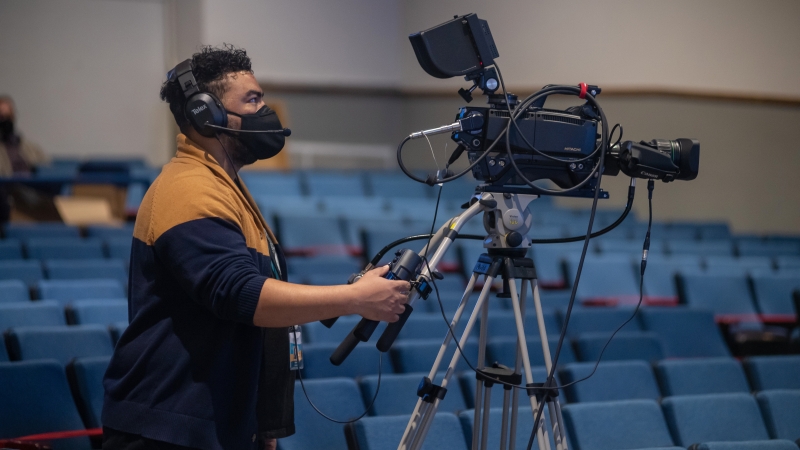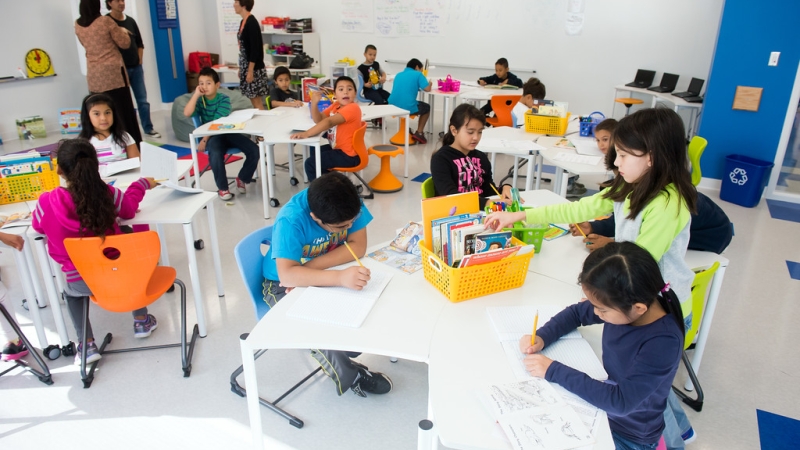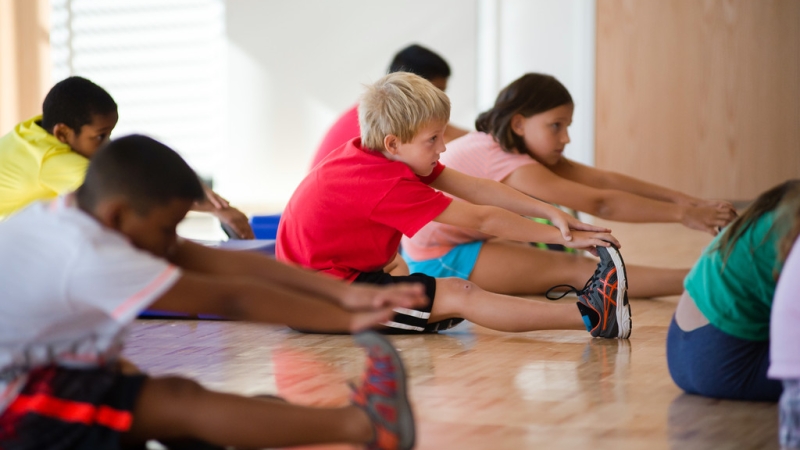
Fairfax Network Video Archives
Archival Programming on Channel 25
Videos for Students & Educators
![]()
 Elementary Science Seminars
Elementary Science Seminars
Audience: Students in Grades 4-6
The goals of this series are to encourage student interest in science and to help students understand basic principles of science and scientific methodologies.
The Option Derby Investigation
This program examines Newton's Laws of Motion and other physics concepts through experiments and discussion about a model car option derby.
• Online Guide
Kitchen Chemistry: The Chef's Choice Investigation
This program explores chemistry principles and methods of scientific investigation through experiments with food.
• Online Guide
Life Science: The Science Fitness Investigation
This program explores the science of fitness through an examination of the broad jump, how various exercises effect different muscles, and how nutrition affects fitness.
• Online Guide
![]()
 Giant Pandas: The Science of Finding Food
Giant Pandas: The Science of Finding Food
Audience: Students in Grades 5-8
This video puts the Smithsonian's National Zoological Park's giant pandas on center stage detailing the scientific method in the experiment—the Giant Panda Foraging Study. The video goes behind-the-scenes with National Zoo scientists to explore how these charismatic animals find bamboo, the mainstay of their diet. Students follow the zoo researchers as they make hypotheses, collect data, and interpret information about giant panda behavior. Students observe the scientists and learn how and why each step of the scientific method is important.
• Online Guide
![]()
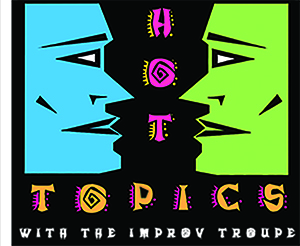 Hot Topics with The Improv Troupe
Hot Topics with The Improv Troupe
Audience: Students in Grades K-12
Recorded before a student audience, the programs feature improvisational skits by The Improv Troupe that highlight issues students face every day. At points throughout the program, the audience interacts with cast members who respond to questions and comments in character. Students learn to develop strategies toward solution of the characters' problems and similar issues in their daily lives.![]()
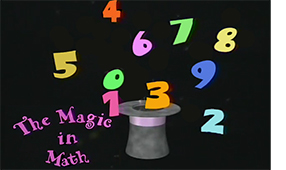 The Magic in Math
The Magic in Math
Audience: Students in Grades K-5
Students discover the fun in math through imaginative demonstrations, puzzles, and activities. Our "mathemagician" helps students unlock the mysteries of math.
Grades K-2, Part 1: Students use a hundreds chart to find patterns of numbers. In the second segment, a pizza party helps students study fraction concepts.
Grades K-2, Part 2: Students use a “magic” function box to find function rules. In the second segment, a tea party helps students study fraction concepts.
Grades 3-5, Part 1: Students use a hundreds chart to find patterns of numbers. In the second segment, students use pattern blocks to study fraction concepts.
Grades 3-5, Part 2: Students use a “magic” function box to find function rules. In the second segment, students find fractions on a number line.
![]()
Making Music is Fun!...with Skip West
Audience: Students in Grades K-3
What’s more fun than listening to music? Making music! Songwriter, musician, and instrument maker Skip West teaches students how to build instruments from common household objects and play songs on them.
Students learn about the four major types of instruments — stringed, woodwind, brass, and percussion — and the sounds the instruments make. West shows students how to build and play their own instruments as they learn about rhythm, tempo, melody, and dynamics.
• Online Guide
![]()
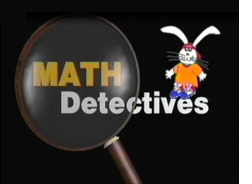 Math Detectives
Math Detectives
Audience: Students in Grades 6-8
Program 1 introduces solving one-step equations using four operations-addition, subtraction, multiplication, and division. It is ideal for introducing equations to late sixth grade and early seventh grade students. It is a wonderful review for late seventh grade and early eighth grade students.
Program 2 introduces students to theoretical and experimental probability. Students will need copies of the activity sheets to complete while they are viewing the program.
![]()
 Wildlife Explorers
Wildlife Explorers
Audience: Students in Grades K-2
This video series is an adventure with three types of animals: mammals, reptiles, and birds. Along with being entertaining, the series educational objectives are to To introduce different groups of animals to young learners, highlighting the shared characteristics and, also, the variety within each group; promote an educated concern and interest in all animals, both inside and outside zoos; and encourage a scientific approach to learning—an approach that emphasizes observing, investigating, forming, and testing hypotheses and explanations and making predictions.
• Online Guide
![]()
 World Tour Language: Spanish
World Tour Language: Spanish
Audience: Students in Grades 5-7
In 20 half-hour lessons, students explore the sounds, writing systems, and basic idiomatic phrases of world languages. Students are introduced to the geography, language, history, art, religion, and music
- YouTube Playlist
- Student Workbook (79 pages)
![]()
Videos for Parents
![]()
 Audience: Parents, Educators, Families
Audience: Parents, Educators, Families
At Home with Language Arts
This series visits parents and their children at home and demonstrates in-home activities that supplement and reinforce what students have learned at school. A child’s interest in sports, weather, or shopping provide the stimuli for parents to help their children improve reading, writing, and communication skills.
At Home with Math
There is no place like home to stress the importance of math in everyday life. Students and their parents discover activities they can do at home to practice math skills. From cooking to home improvement to creating a family budget, this series shows ways families can reduce math anxiety by seeing real-world applications of mathematical principles.
At Home with Music
This series offers suggestions and demonstrations of family music activities including participation in creative movement, singing favorite songs, learning about classical music, studying folk songs, and selecting and playing instruments.
At Home with Science
Parents and their children demonstrate activities that turn the home environment into a living laboratory for science exploration. Each program features families having fun at home as they work together to perform scientific experiments and analyze results.
At Home with Social Studies
In this series, parents and children experience history, geography, and civics through fun and educational at-home activities. The programs in the series feature classroom activities adapted for the home.
At Home with Visual Arts
Educators from each grade level describe classroom objectives and suggest ways parents can further an interest in the visual arts at home. Each program demonstrates family activities that foster an appreciation of the arts though hands-on experiences and visits to museums and art galleries.
![]()
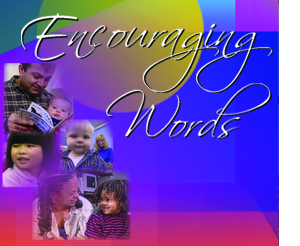 Encouraging Words: Language Development
Encouraging Words: Language Development
from Birth to Age 5
This series helps families understand the importance of language in developing literacy skills. Each program features interviews and insights from parents, an early childhood specialist, a speech and language professional, and a pediatric neurologist; and demonstrates activities that promote language development.
• Online Guide
Palabras Alentadoras — Encouraging Words in Spanish
• Online Guide
![]()
 Smart Play
Smart Play
Audience: Parents and Educators
Play is intrinsic and kids just do it! Can parents influence the play environment to encourage learning? These questions, and many more, are answered as program hosts demonstrate activities that can be used to develop preschooler's skills, such as the ability to identify, match, sort, and create. These easy, inexpensive activities reflect how children interact with the world around them.
• Smart Play Project Guide
![]()


